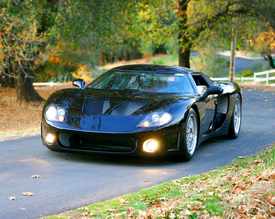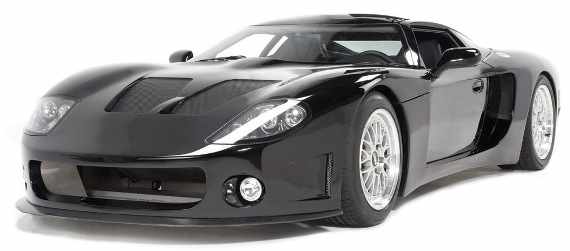The Tesla Roadster is a cute little electric runabout. Based on the Lotus Elise’s architecture, it is still light at 1215 kilograms even with the batteries and thus a nimble little rollerskate. The 185-kilowatt motor spins the Roadster to 100 km/h in 3.9 seconds on the way to a top-end of around 200 km/h. It’s sexy because it retains much of the Elise visage. Tesla claims a range of just under 400 km, but those of us with a right foot full of anything except helium should expect quite a bit less.
Speaking of heavy feet, Capstone Turbine Corporation recently debuted the CMT-380. Don’t think electric car, and don’t think traditional hybrid. Think next-level hybrid with batteries kick-started by a 30-kilowatt microturbine. This is much more sexy.
The CMT-380 can travel around on its lithium-polymer battery pack for up to about 128 kilometres. At some predetermined discharge point, Capstone’s own little C30 microturbine, burning either diesel or bio-diesel, spins up to charge the pack extending the range up to around 800 kilometres. The turbine itself is very low-maintenance and is clean enough to meet the nutty standards set by both the United States Environmental Protection Agency and the California Air Resources Board. In fact, it doesn’t even require any exhaust after-treatment. The battery pack can be charged at home or a public recharging station.
What is a microturbine? It’s a very small jet engine.
Capstone has been making microturbines since 1988. Though their first microturbines were integrated into automotive applications, the stronger market back then was in stationary power applications. Today, Capstone’s 30-kilowatt microturbines are running around in hybrid electric buses, trolleys and transit shuttles all around the planet. With interest in low- and no-emission vehicles in the consumer market on the rise, many are taking a new look at microturbine technology.
In fact, earlier this year Langford Performance Engineering Ltd. in the United Kingdom integrated a Capstone C30 into a Ford S-Max people mover, creating the Langford Whisper. To poke the enthusiast, however, Capstone needed something a little more visually stimulating than a Ford S-Max.
 If the shape of the CMT-380 looks familiar, then you get a gold star: It’s a GTM shell sourced from Factory Five Racing, purveyors of exceptional Cobra replicas. “The sleek-looking, low to the ground, high-performance supercar definitely raises hybrid’s cool factor on several levels,” stated Jim Crouse, Capstone’s Executive Vice President of Sales and Marketing.
If the shape of the CMT-380 looks familiar, then you get a gold star: It’s a GTM shell sourced from Factory Five Racing, purveyors of exceptional Cobra replicas. “The sleek-looking, low to the ground, high-performance supercar definitely raises hybrid’s cool factor on several levels,” stated Jim Crouse, Capstone’s Executive Vice President of Sales and Marketing.
Performance to 100 km/h is on part with the Tesla, though the top end is higher at 240 km/h. The clincher is that range, however. Production? While Capstone says complete car manufacturing really isn’t in their business plan, “We plan to finalize very soon a limited production plan, in part, based on interest received at the LA Auto Show. We anticipate customers will be a select group of individuals who appreciate its many innovative high-performance and high-technology driving characteristics, long driving range and ultra-low emissions,” said Darren Jamison, Capstone President and CEO.


